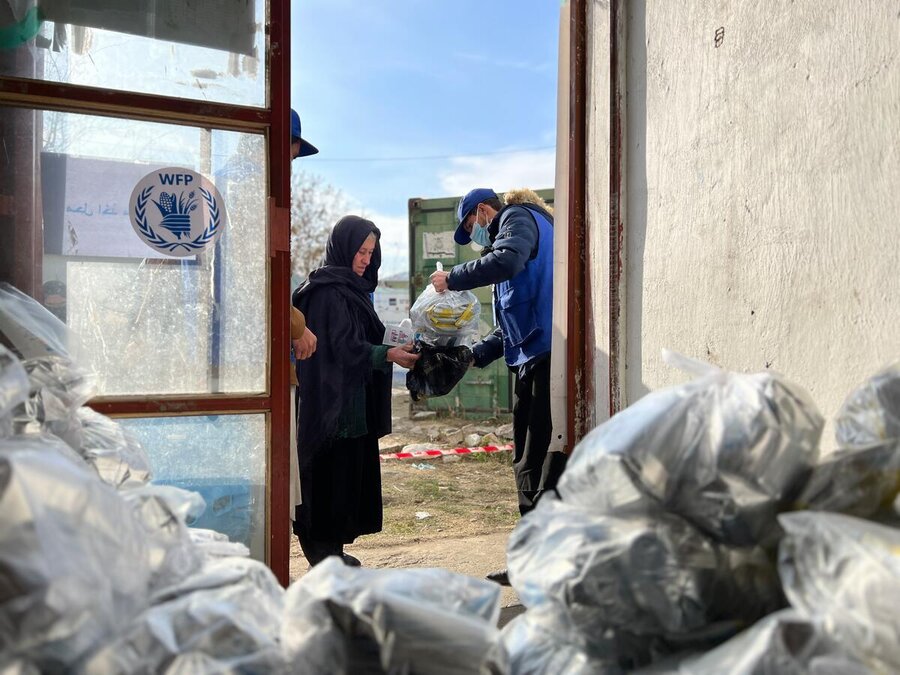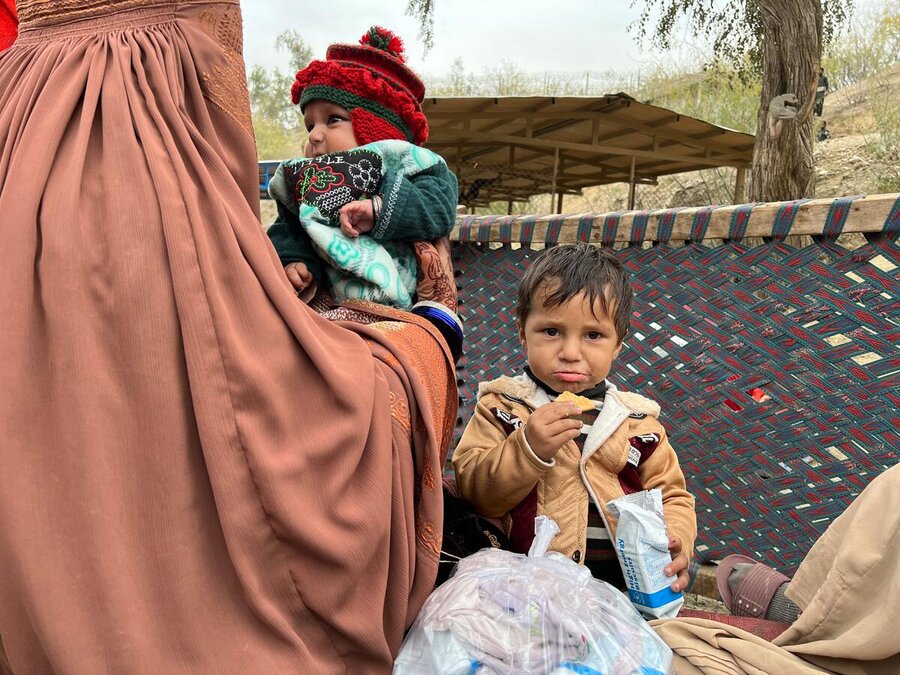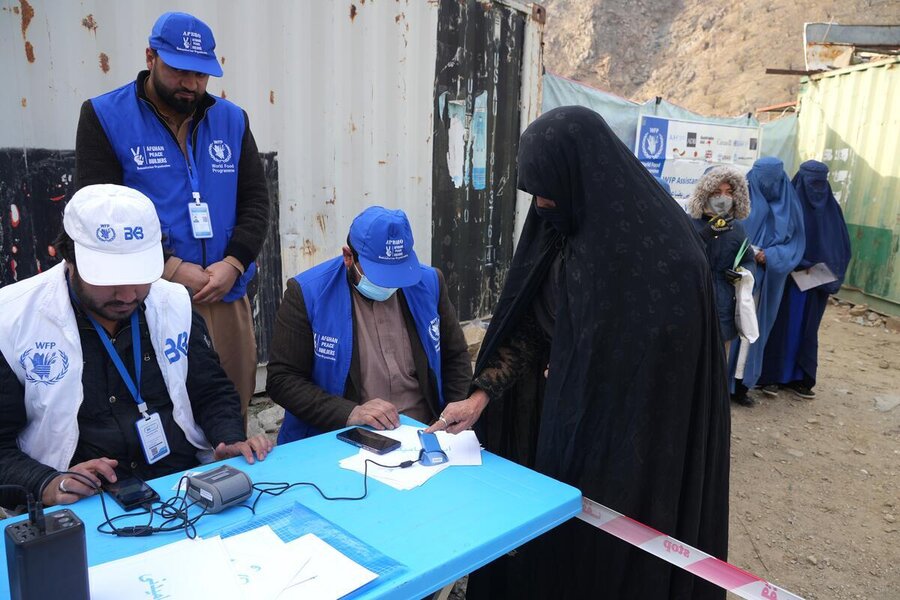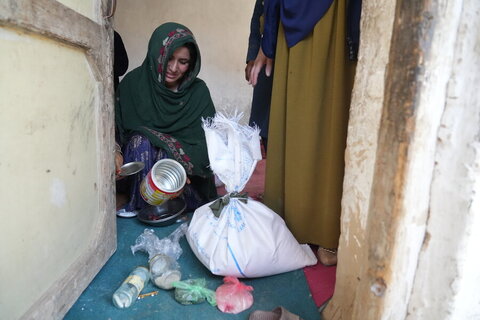Afghanistan: Funding cuts put lives at risk amid nutrition and hunger crisis

Nearly one-third of Afghanistan’s population – up to 15 million people – need emergency food assistance to survive. Eight out of ten families cannot afford a minimally nutritious diet, and three out of four families have to borrow money to buy basic groceries – a reality that surely weighs on the minds of delegates attending the Nutrition4Growth summit in Paris this week.
“People are in a very difficult situation,” says Mona Shaikh, Head of Nutrition for the World Food Programme (WFP) in Afghanistan. “We are seeing more and more women and children coming to the clinics. Many of these mothers are very young.”
WFP is often the last lifeline for women struggling to afford basic nutritious food for their children. However, debilitating restrictions continue to push them further to the fringes of Afghan society, forcing them to make impossible decisions to feed their children.

“Every year, we see more women come to the clinics than we expected,” Shaikh explains. If mothers are malnourished, their children will also suffer.”
Last year, WFP reached almost 10 million women and children across Afghanistan, across all its activities, including treatment of malnutrition of 1 million mothers and 1.4 million children, 829,000 of whom were girls. But more needs to be done. Two-thirds of female-headed families cannot afford essential nutrition, 20 percent more than male-headed households.
In 2025, 3.5 million young children in Afghanistan are expected to be malnourished. “This is huge. We haven’t seen anything like that in the last four years,” says Shaikh.
Additionally, 1.2 million pregnant and breastfeeding mothers are suffering from malnutrition and urgently need treatment and nutrition support.
“Once a child or a woman becomes malnourished, we have to help them, or they risk worsening to severe malnutrition, which is a life-threatening situation,” says Shaikh. “The mortality risk is very high for moderately malnourished children – three times higher than for children who aren’t malnourished.”

Women and children are particularly vulnerable to malnutrition. But funding cuts mean WFP is only covering children aged under 2 (rather than from 6 months old to just under 5 years). “We are struggling,” says Shaikh. Pregnant and breastfeeding women receive half the food they need to prevent malnutrition.
Shaikh fears a “never-ending cycle” unless there is a focus on prevention. “Sustainability comes from strengthening prevention programmes. But unfortunately, when funding cuts come, we have to cut down on prevention, which is the opposite of what should be happening. You cannot cut the life-saving side of the programme.”
She points to WFP’s prevention pilot in Badakhshan in 2022-23, when 18 months of supplying supplements, “reduced stunting by 4 percent. It was a short intervention, but it was community-based and consistent.”

Health volunteers within communities play a crucial role. “Afghanistan is a mountainous country, and although there are public health facilities, it’s difficult for women and children to always access them,” says Shaikh.
In 2023, WFP had to cut general food assistance for 10 million people, hitting critical prevention activities. These cuts came when the post-2021 transfer-of-power scale-up had “stabilized and reduced” malnutrition rates to a degree.
Over the past year, however, “instead of numbers going down, they’ve gone up.”
Currently, WFP can only provide emergency food assistance to just over 6 million people per month out of the nearly 15 million people in need. Families selected for emergency food assistance receive in-kind food rations or cash to buy food.
‘We eat less, sometimes not at all’: Cuts to food relief deepen hunger in Afghanistan

In addition, families with young children or pregnant and breastfeeding mothers receive specialized nutritious food to prevent malnutrition. If life-saving aid is reduced, they will lose out on the nutrition they need.
(Over 8 million people, including more than 2 million women and young children, are left without the food and specialized nutrition support they desperately need.)
“We can do standalone malnutrition prevention nutrition activities,” says Shaikh, “but if there’s no funding for emergency food assistance, we reach fewer mothers and children with malnutrition prevention. It hurts us in two ways.”
WFP urgently needs US$555 million to maintain vital food assistance across all its programmes for six months. Without additional funding, critical programs for women, children and families – including emergency food assistance, malnutrition treatment, school feeding and vocational training for women – are at risk.
